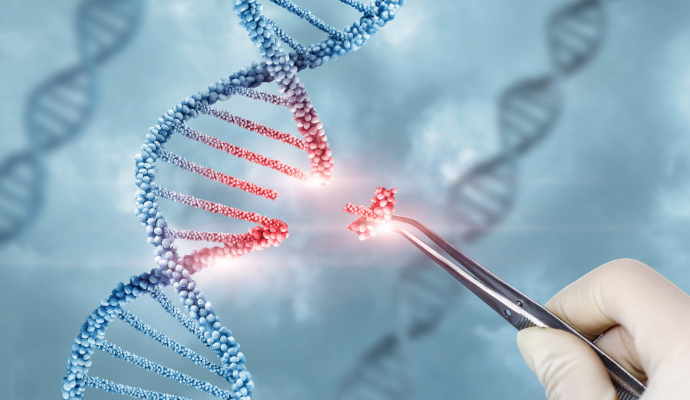Thermo Fisher Introduces Protein To Advance CRISPR Gene Editing
The protein eliminates off-target effects compared to wild-type Cas9 in several cell types for more precise CRISPR gene editing.

Source: Getty Images
- Thermo Fisher Scientific recently introduced its new protein, Invitrogen TrueCut HiFi Cas9 Protein, to complement its growing CRISPR gene editing solutions portfolio.
CRISPR technology has become an increasingly popular tool used to edit human genes, also known as in vivo gene editing.
But this type of editing often results in edits in unintended locations. Therefore, limiting off-target effects is crucial for applications, including translational research, drug screening, and drug modeling as researchers look to future therapeutic development.
The Invitrogen TrueCut HiFi Cas9 Protein eliminates off-target effects compared to wild-type Cas9 in several cell types, including T cells and induced pluripotent stem cells (iPSCs).
Additionally, the protein shows improved off-target profiles relative to other products on the market.
“Our pharma and biotech customers are looking for highly precise, accurate solutions to harness the power of CRISPR genome editing,” Brandon Pence, vice president and general manager of cell biology at Thermo Fisher Scientific, said in the announcement.
“The new Invitrogen TrueCut HiFi Cas9 Protein offers researchers the confidence that their edits took place where they intended, not somewhere else in the genome,” Pence continued.
Thermo Fisher’s growing portfolio of genome editing tools includes the Invitrogen TrueDesign Genome Editor, a free online tool to assist scientists in designing their genome editing experiments.
The predictive algorithm scores each guide RNA, giving scientists the insights needed to select the suitable materials to limit off-target effects and successfully edit.
Overall, the Invitrogen TrueDesign Genome Editor supports experiment types, such as gene knockouts, fluorescent tagging, insertions, deletions, SNP edits, and replacements, a Thermo Fisher spokesperson explained.
In September, Thermo Fisher launched the integrated Gibco AAV-MAX Helper Free AAV Production System to enable scalable gene therapy workflows.
AAV is vital for gene therapy production, as over 1,300 unique gene therapy products are currently under development and almost half are reliant on AAV. Developing AAV vectors includes plasmid development and production, cell expansion, plasmid transfection, viral vector production, purification, and fill and finish.
